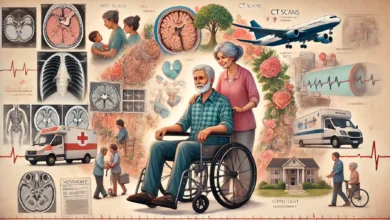No, I’m sorry, we can’t.
It’s become our standard answer to most invitations now. Our niece sent a text last month. Hey, we’re going skydiving. Do you guys want to come? I was so shocked I asked if she meant to send the invitation to someone else. Mistake or not, it brings home the reality of living life with a chronic illness. Inside or outside event? How far away? How long will it last? How late?
It’s become too easy to decline politely.
We’ve always loved camping. Gary and I have wonderful memories of camping with our kids, family, and friends. We introduced our oldest granddaughters to the joy of campfires and sleeping in tents. Long before Gary’s diagnosis, we had begun a workout program anticipating a future camping and hiking trip to the Grand Canyon.
Our youngest granddaughter decided it was her turn to camp. When our daughter-in-law Aimee suggested we plan a campout, I could feel the words forming. We can’t. Then another thought broke through. Our life had evolved into a never-ending series of we can’t. Every missed event was a trigger for Gary to become depressed.
This time, I decided to answer yes, we can.
Planning a campout for someone with a chronic illness requires some reasonable investigation. You must ask about physical limitations, medication needs, assistive device requirements, or special diet. What activities are they able to safely join? Which activities should be avoided?
We travel long distances to see doctors, so Aimee booked a densely wooded state park 30 minutes from home. The shorter ride was a plus; trees would provide much-needed shade during the day’s heat. Summertime tent camping can be challenging if you’re healthy, but the temperature is a significant symptom stressor and energy killer for people with compromised health.
Gary’s pill schedule includes cycling off his iron chelation every weekend, so by setting up camp on a Friday; he could iron load during the trip with beef, black beans, hummus, etc. We’ve also learned to shift other fatigue-inducing medications to late morning and just before bedtime so he will feel better early in the day. This shifting of dose time helps combat his consistently low energy.
We chose a campsite with electricity, potable water, and 25 yards from shower and restroom facilities. Having power lets us position fans to help combat the heat and make daytime naps bearable. Gary could fill an air mattress using a small electric air pump and plug in his APAP machine.
The lake was accessible by following a short trail from our camp. Gary used two double aluminum hiking poles to help with keeping his balance. He can no longer swim, but with our assistance, he could get into the shallow edge and cool off by hanging onto a small inflatable. Keep in mind the importance of staying aware. A slip or loss of balance could end badly.
Saturday evening, the kids wandered off to the weekly park dance. Gary and I stayed behind in the camp, enjoying the quiet of the fire. It had been a long, exhaustive day of fun with family and friends. We left the others to enjoy their activities late into the night and went to bed early. Being mindful of your limits will help you through the next day.
It’s also essential to remain flexible. We were having so much fun Saturday we added one more day to our trip, deciding to return home Monday instead of our original plan of Sunday. I could see it was a mistake by mid-day, so we packed up and returned Sunday evening. It helps when the people you’re with understand your limits.
Living with a chronic illness forces you to adjust to daily living, but you shouldn’t give it the power to stop your life. It’s true sometimes we have to pass on an invitation, but with some planning, a few adjustments, and a little understanding, we look forward to saying, why yes, we can.



